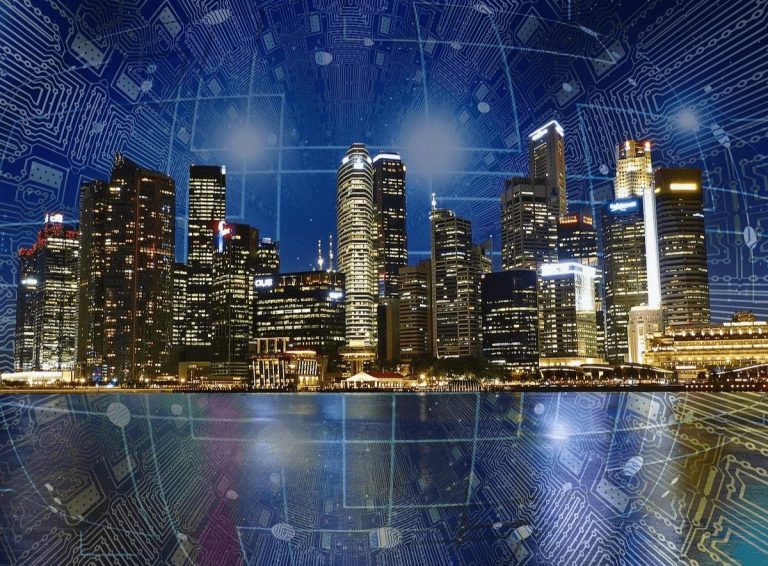Resilience-as-a-Service: The new normal
After months of confinement, offerings concerning digitalization and resilience-associated products in its larger definition have progressed by several years, even by a decade. This acceleration stresses the existence of added value propositions that can be updated by creative teams from different fields, especially those working in the areas of security, risk management, emergency measures and resilience. They could integrate efforts to create a new Resilience-as-a-Service Movement (RaasM).
The last few years, with several initiatives from research and multilateral organizations, the concept of Resilience opened up a range of theoretical conversations, which often focused on building long-term resilience strategies to cope with stressors derived from climate change or social inequalities. Pioneer entrepreneurs and private impact investors aimed at equipping the market with digital tools based on the operative side of the concept. Emergency and risk managers were also coping with incidents demanding resources to improve their capacity to deal with disasters or business continuity.
The results of this situation are that we can find ready-to-use value propositions in the market and, more importantly, also find creative teams available to adapt and launch methods, tools and technologies to improve the resilience of our communities and organizations. The virus has not affected all of these assets. Before the crisis, researchers, practitioners and innovators were already trying to promote strategic, tactical and operational tools for a resilience-thinking approach ready to be used by cities and businesses. However, adoption of these tools by the market was sometimes slow and tech evangelization remained necessary. The COVID crisis could have changed this scenario and provided the opportunity to help with the global situation, boosting the “Resilience-as-a-Service-Movement” (RaaSM) as a new industry norm.
The COVID crisis could have changed this scenario and provided the opportunity to help with the global situation, boosting the “Resilience-as-a-Service-Movement” (RaaSM) as a new industry norm.
Tools and teams for resilience ready to support the new normal
For many years, we have been disseminating definitions of Resilience. Let’s do it again. Resilience could be defined as the capacity of a community or an organization to be prepared to cope with any kind of exceptional event (a storm like Katrina, a pandemic like COVID) in order to be able to resist, absorb, adapt to, and then recover its functions in a timely and effective manner, in order to ultimately change its trajectory and learn from such disruption. This last sentence makes the difference when talking about resilience.
Today, to apply this vision, a multitude of mature and emerging technologies are available. You have heard about them and their long list of acronyms…geographic information systems to represent data in a mapped format (GIS); middleware platforms to manage sensors (IoT); artificial intelligence (AI) for machine learning algorithms (ML); solutions for data cleaning, preparation, and analysis with astonishing data visualization tools (Data Science); platforms to manage data that are impossible to store in the memory of a single computer (Big Data); satellite imagery analysis, modeling platforms for traffic, floods or climate variables, mobile and interactive content management platforms (CMS) to improve collaboration and sharing; or learning management systems (LMS) that can easily be trained on how to use all these technologies…
Never before, have we had so many tools accessible to non-programming experts thanks to virtualization and cloud service offerings. Business continuity and disaster recovery principals can fuel the movement of Resilience-as-a-Service, integrating this myriad of innovative systems (proprietary, open-source or hybrid, public or private). Therefore, to drive towards the vision of creating more resilient value chains, urban services or local communities, we will need the convergence of different skills and knowledge to ensure and sustain the adoption and operation of business continuity and resilience management frameworks supported by the judicious use of technology with sobriety.
The good news is that we can find teams all over the globe that have spontaneously emerged to cope with the COVID crisis while applying this vision.
Resilience-as-a-Service-Movement (RaaSM) may be a valuable ally for decision-makers, resilience and emergency managers in cities, and for security and risk professionals in organizations. It can be of great value to reach business continuity and municipal operations goals. The concept should interrelate all the different tools, methods and approaches from security, risk, disaster crisis management, food safety, societal resilience, CBRNE threats (Chemical, biological, radiological, nuclear and explosive), health threats, and critical infrastructures.
Multi-hazard, multi-stakeholder and systemic by nature, RaaSM may very well have the potential to provide an attractive and efficient addition to business continuity and (territorial or specific) emergency plans to promote a shift towards sustainable and resilient management. In the industry, it will generate more confidence among customers and employees and improve its reputation. In cities, RaaSM could be seen as a tool to safeguard life, as well as for the renaissance of more lively urban areas and connected communities. These can be promoted by Municipal Resilience Officers under the leadership of Civil Protection, Climate Change or other Resilience Officers, depending on every local situation.
The good news is that we can find teams all over the globe that have spontaneously emerged to cope with the COVID crisis while applying this vision. We can also find experienced resilience professionals that had already built resilience and business continuity plans or applied digital tools before the sanitary impact struck. The new normal will bring their work to the forefront in order to build resilient communities, cities and organizations that will be better prepared to face risks that are either man-made or related to climate change, such as the COVID-19 pandemic impact. These professionals in the field are now all stronger and wiser than ever. They are ready to help us bounce back and change the trajectory of our organizations and communities and contribute to becoming more resilient so as to cope with the new challenges that our world will certainly face in the future.
Ignasi Fontanals. Director Europe REZILIO
???? Book a private tour of Rezilio with one of our experts by clicking here !






